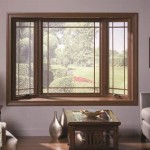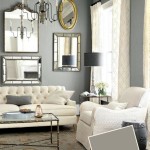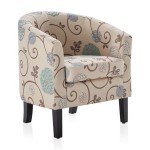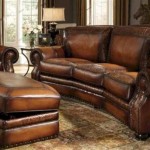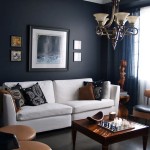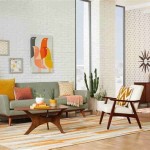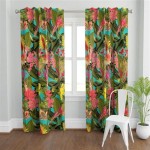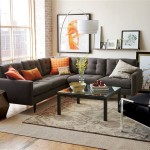Wall Tapestry in Living Room: Aesthetics, Functionality, and Design Considerations
Wall tapestries, historically associated with castles and grand estates, have experienced a resurgence in contemporary interior design, notably within living rooms. These textile artworks transcend mere decoration, offering a blend of aesthetic appeal, functional benefits, and design flexibility. This article explores the role of wall tapestries in living room décor, examining their key advantages, design considerations, and practical applications.
The installation of a tapestry in a living room can instantly alter the room's atmosphere. They can introduce color, texture, and pattern where needed, transforming a bland or sterile space into a more inviting and personalized environment. The size, style, and material of the tapestry contribute to creating a desired ambiance, ranging from bohemian and eclectic to modern and minimalist. Moreover, a well-chosen tapestry can act as a focal point, drawing the eye and establishing a visual hierarchy within the room.
Aesthetic Enhancement and Artistic Value
One of the primary advantages of using a wall tapestry in a living room is its capacity to enhance the aesthetic appeal of the space. Unlike mass-produced prints or generic wall art, tapestries offer a unique tactile dimension. The woven texture, whether coarse or fine, adds depth and visual interest that a flat surface simply cannot replicate. This textural quality can soften the hard edges of modern architecture and create a more welcoming atmosphere.
Furthermore, tapestries come in an immense variety of styles, ranging from historical reproductions and traditional designs to contemporary abstract art. This versatility allows homeowners to select tapestries that perfectly complement their existing décor or express their personal aesthetic preferences. For example, a Renaissance-inspired tapestry could add a touch of classic elegance to a traditional living room, while a geometric tapestry could provide a modern, edgy contrast in a minimalist space. The choice of colors, patterns, and imagery within the tapestry further contributes to the overall visual impact, allowing for a high degree of customization.
Beyond their aesthetic value, select tapestries hold significant artistic merit. Original antique tapestries, or high-quality reproductions of famous historical works, can become valuable additions to a living room, elevating the space to a gallery-like setting. These pieces represent a tangible connection to art history and can spark conversation and appreciation. Even more contemporary tapestries created by skilled artisans can represent a unique form of textile art, showcasing craftsmanship and creativity that elevates the room's overall design.
The color palette offered by tapestries is extensive. They can be used to introduce vibrant hues, create subtle contrasts, or reinforce existing color schemes within the living room. A brightly colored tapestry can serve as a splash of vibrancy against neutral walls, injecting energy and personality into the space. Conversely, a tapestry with muted tones can create a calming and sophisticated atmosphere, complementing existing soft furnishings and accessories. The strategic use of color in a tapestry can therefore significantly influence the overall mood and ambiance of the living room.
Functional Benefits: Acoustics and Insulation
Beyond aesthetics, wall tapestries offer several functional benefits that contribute to the comfort and livability of a living room. One significant advantage is their ability to improve acoustics. The dense fabric of a tapestry absorbs sound waves, reducing echo and reverberation within the room. This is particularly beneficial in large or open-plan living spaces where sound can easily bounce off hard surfaces such as walls, floors, and ceilings.
By dampening sound, a tapestry can create a more comfortable and intimate atmosphere, making it easier to hold conversations, watch television, or listen to music. This acoustic dampening effect is especially useful in apartments or multi-family dwellings where noise transmission between units can be a concern. A tapestry can act as a buffer, minimizing the impact of external noise and creating a more peaceful and relaxing environment within the living room.
Another functional benefit of wall tapestries is their insulating properties. Fabric, especially thick woven materials, acts as a thermal barrier, helping to regulate the temperature of a room. During colder months, a tapestry can help to retain heat within the living room, reducing energy consumption and lowering heating costs. Similarly, during warmer months, a tapestry can help to block out direct sunlight and prevent the room from overheating.
The insulating properties of a tapestry are particularly beneficial in older homes with drafty walls or poorly insulated windows. By covering a large wall area, the tapestry can help to minimize heat loss and create a more comfortable and energy-efficient living space. This benefit, combined with the aesthetic appeal, makes wall tapestries a practical and stylish addition to any living room.
Design Considerations: Size, Placement, and Style Compatibility
When selecting and installing a wall tapestry in a living room, several design considerations should be taken into account to ensure optimal visual impact and functionality. The size of the tapestry is a crucial factor. A tapestry that is too small will appear insignificant and lost on a large wall, while a tapestry that is too large will overwhelm the space and create a cluttered or unbalanced effect.
The ideal size of the tapestry will depend on the dimensions of the wall, the scale of the furniture in the room, and the desired focal point. As a general rule, the tapestry should occupy approximately two-thirds to three-quarters of the wall space, leaving sufficient breathing room around the edges. It’s important to consider how the tapestry will relate to other elements in the room, such as sofas, chairs, and artwork.
Placement is another critical aspect of tapestry installation. The tapestry should be positioned in a location where it will be easily visible and appreciated. This could be above a sofa, behind a fireplace, or on a large blank wall. The height at which the tapestry is hung is also important. It should be positioned at eye level to ensure that it is comfortable to view. If the tapestry is hung too high or too low, it will detract from its visual impact and create an awkward or unbalanced effect.
Style compatibility is essential for creating a cohesive and harmonious living room design. The style of the tapestry should complement the existing décor and reflect the overall aesthetic of the space. In a traditional living room, a classic tapestry with intricate patterns and rich colors would be a suitable choice. In a modern living room, a minimalist tapestry with clean lines and simple geometric patterns would be more appropriate. It is crucial to consider the color palette, patterns, and textures of the tapestry in relation to the existing furniture, flooring, and accessories.
The choice of tapestry material can also significantly impact the overall design. Wool tapestries offer a luxurious and traditional look, while cotton tapestries provide a more casual and contemporary feel. Synthetic materials, such as polyester, are often more durable and affordable, making them a practical choice for high-traffic areas. The texture and weight of the material should also be considered, as these factors can affect the way the tapestry hangs and the overall visual impact.
Finally, the method of hanging the tapestry can influence its appearance and longevity. There are several options for hanging tapestries, including using a tapestry rod, Velcro strips, or nails. A tapestry rod is a traditional and elegant solution that allows the tapestry to hang freely and drape naturally. Velcro strips offer a more discreet and modern approach, while nails can be used for smaller and lighter tapestries. It is important to choose a method that is appropriate for the weight and size of the tapestry and that will not damage the wall.
Integrating wall tapestries into living rooms offers a multifaceted approach to interior design. By carefully considering aesthetics, functionality, and design elements, homeowners can leverage the unique properties of tapestries to create visually stunning and functionally enhanced living spaces.

Vintage Boho Tapestry Wall Decor Bohemian Art N Mandala Hanging Living Room Bedroom Home Etsy

Antique Wall Tapestries Are Back Here S Where To Buy The New York Times

59 In W X 35 L Wall Hanging Dip Dye Tapestry Fiber Art Boho Bedroom Decor Coffee Yybydm6888 The Home

59 In W X 35 L Wall Hanging Dip Dye Tapestry Fiber Art Boho Bedroom Decor Coffee Yybydm6888 The Home

Framed Wall Pictures For Living Room Stylish Decor About Art

Home Decor Wall Art Boho Botanical Set Of 3 Prints Living Room Hangings Office Above The Bed Etsy

8 5 Foot Vintage Spring Floral Large Wall Tapestry

Living Room Wall Decor Ideas How To Display Art Luxdeco

Extra Large Abstract Wall Art For Living Room Clouds

3d Art Deco Large Metal Round Textured Wall Decor For Living Room Bedroom

